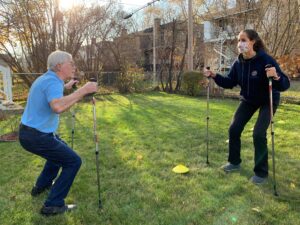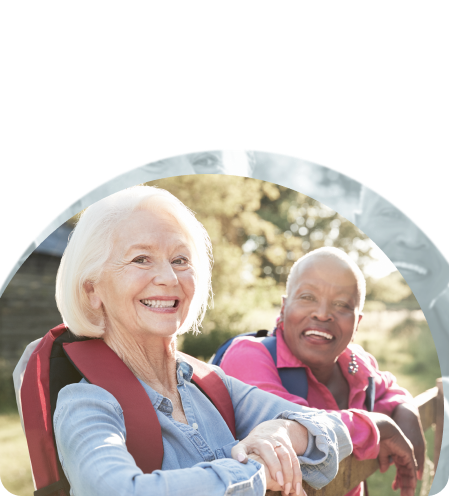A stroke possibly announces another
The text that follows is a summary of the presentation given by professor and physiotherapist Marylin MacKay-Lyons at the 10th stroke summit on October 30, 2020. There are 62,000 cases of stroke annually in Canada on average, 16,000 of which are result in death. Among stroke survivors, 25% have a recurrence within two years, with serious consequences such as greater loss of capacity and a less favorable prognosis for recovery. To reduce risk, Professor MacKay-Lyons suggests an approach that focuses on preventing recurrence, also called secondary prevention.
The main risk factors for recurrence are:
- hypertension
- low HDL cholesterol
- type 2 diabetes
- smoking
- the occurrence of a transient ischemic attack (TIA).
It is therefore essential to reduce these risk factors as much as possible to minimize the risk of having another stroke. There are two main intervention families to achieve this, namely pharmacological treatments and non-pharmacological interventions. In this second category, we find interventions aimed at changing lifestyle habits such as quitting smoking and practicing physical activities.
Physical activity, an important asset
Researchers have shown that exercise-based interventions are more effective than pharmacological treatments in reducing mortality in people with stroke [1]. For several years, studies have been accumulating to demonstrate the benefits of exercise on various health factors related to preventing the risk of triggering a stroke [2]. For example, physical activity lowers systolic blood pressure significantly for several hours after the end of physical activity. Physical activity also has a positive impact on the production of HDL (the “good” cholesterol) and also plays a role in lowering fasting blood sugar. In addition, its regular practice can significantly and safely reduce the body mass index, which may be linked to the increased risk of cardiovascular disease.
One of the main challenges for a person with a stroke is their motivation to change their lifestyle habits and to realize the importance of physical activity. Also, several strategies are proposed, here are some that health professionals can put in place in collaboration with the person concerned after a stroke:
- assess the person’s knowledge of their own abilities and determine their readiness for change;
- encourage the person to set S.M.A.R.T. goals [1] and relevant to each type of task or physical activity;
- ensure that family and friends are aware of the importance of support in keeping the person motivated to adopt a new behavior;
- encourage the person to participate in group exercise sessions or find a training partner to promote socialization;
- ensure adequate progression in the exercises in order to increase the person’s confidence in their abilities and maintain the health effects;
- maintain communication to promote membership (phone calls, emails, video calls).

What to do and when to do it
Exercise can be started very soon after a stroke, with the consent of the medical team. Usually, early mobility exercises can start within a week of the stroke. About 1 to 3 months after the incident, people are called upon to do supervised rehabilitation exercises. Between the 3rd and 6th month post stroke, group exercises can begin. Now is the time for the person to become more independent in their practice and to use the resources available in the community. After that, it is recommended that you remain physically active and follow the activity guidelines offered by the World Health Organization and the Canadian Society for Exercise Physiology.
Aerobic exercise, such as walking, cycling, swimming, or any other activity that increases heart rate, should be part of the overall stroke rehabilitation program. Aerobic and endurance exercise improves heart and lung fitness, reduces fatigue, and provides the energy you need to stay active all day. They are part of an overall exercise program that should also include, but not be limited to, muscle strengthening, movement emphasizing tasks of daily living, and balance exercises. These make everyday tasks like climbing stairs, getting up from a chair and shopping for groceries easier while reducing the risk of falls at home.
Although non-pharmacological interventions such as physical activity do not completely prevent recurrence, scientific evidence indicates that they help reduce risk factors. Combined with effective pharmacological treatment and healthy lifestyle habits that include a balanced diet, stress management and smoking cessation, physical activity should be prescribed as a secondary prevention approach. To find out more about prevention and lifestyle habits, visit the Coeur + AVC website: https://www.coeuretavc.ca/vivez-sainement
Sources:
- Naci, H. and J.P.A. Ioannidis, Comparative effectiveness of exercise and drug interventions on mortality outcomes: metaepidemiological study. BMJ : British Medical Journal, 2013. 347: p. f5577.
- Lawrence, M., et al., Multimodal secondary prevention behavioral interventions for TIA and stroke: a systematic review and meta-analysis. PLoS One, 2015. 10(3): p. e0120902.
[1] S.M.A.R.T. : Specific, measurable, achievable, realistic, temporal







Comments